10+ Easy Words For Tagalog Cooking Utensils
Original Blog Post: https://ling-app.com/fil/tagalog-cooking-utensils/
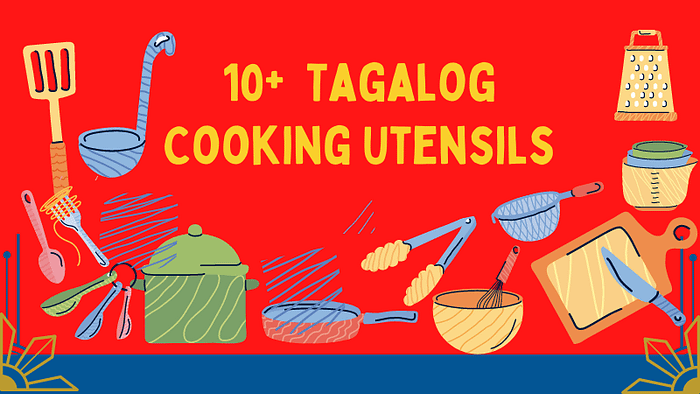
The customary practice of speaking common words in your target language is one of the best ways to truly master and become confident in what you are learning. In today’s post, we will walk you through the essential words for Tagalog cooking utensils so that you can easily converse about this topic with the locals.
The Philippines is known to be a blissful and colorful country. Seeing the captivating tourist spots and hospitable people makes you want to experience the Philippines more. Due to the nation’s unique geographical location, many foreigners and visitors are longing to explore and appreciate more about the country, especially in learning the Filipino language. Because various provinces in the Philippines are near each other, the culture, traditions, and languages are related and relatively simple to understand.
If you want to get into the locals’ good side, one topic that you must talk about is the food and cooking process. For many Filipinos, food is considered a popular topic. To help you get started, below are the 10+ Tagalog cooking utensils that you can study and practice to enhance your vocabulary skills:
10+ Tagalog Cooking Utensils
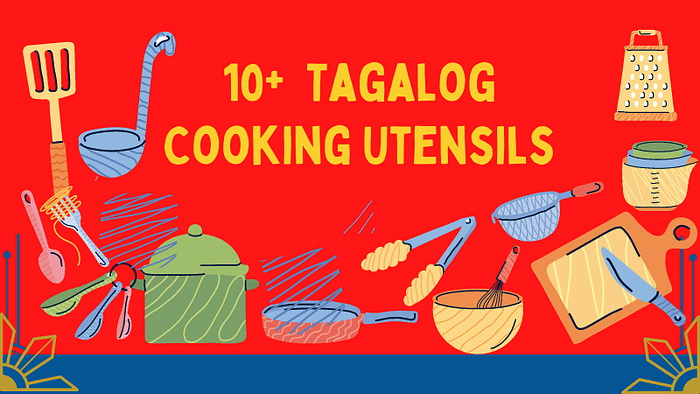
1. Kaserola (Sauce Pan)
Almost entirely of the Filipino people are fond of eating soup and other types of stew. The saucepan or ‘kaserola’ is the cooking utensil that they use to cook and boil ingredients such as pork, beef, and vegetables. Not to mention, but the famous Filipino soup ‘Sinigang’ is cooked using ‘kaserola.’
2. Kawali (Frying Pan)
One of the commonly used kitchen utensils in the Philippines is the ‘kawali.’ Considering that there are countless street foods or ‘turo-turo’ in the country, using ‘kawali’ is perfect for cooking appetizing fried foods.
3. Pang-Lechon (Rotisserie)
Roasting a pig and skewing it on a long solid rod and being cooked on hot coals is called ‘Lechon.’ This roasting style is ordinarily served and eaten during festivals and special occasions in the country. Other types of meat like beef (Lechon Baka) and chicken (Lechon manok) can also be used instead of a pig.
4. Palayok (Clay Pot)
One of the most elegant kitchen items in Filipino cuisine is the ‘palayok.’ Instead of using metal cooking pans, many Filipinos used to cook their stews and soups in a clay pot. Using clay pot will make the Filipino recipes more savory and tangy. In addition to that, the most delicious Filipino food that is cooked in the ‘palayok’ is Sinaing na Tulingan.
5. Salaan (Strainer)
Apart from knowing that there are varieties of Filipino dishes, the Filipino people tend to eat fresh fruits during peak seasons. Since the Philippines has a tropical climate, some bountiful fruits and vegetables can be eaten right away. Just wash them with running water and use a ‘salaan’ to strain the water, then ‘Viola’! It’s chow time!
In addition, wide strainers are also used to strain pasta or noodles in cooking Filipino-style spaghetti and ‘Pansit.’
6. Pandikdik At Pambayo (Mortar And Pestle)
‘Pandidik’ and ‘Pambayo’ are widely used in the Filipino kitchen. Seeing that Filipino soups need to have spices, these two kitchen utensils are used to grind pepper, salt, and other spices. The ingredients are added and mixed to make their recipes rich in flavor.
7. Sandok (Ladle)
Kitchen utensils used by Filipinos depend on the food that they will cook. For instance, cooking Filipino soups customarily uses ‘sandok’ or large spoons because they have a soupy and pastelike base.
8. Kaldero (Cauldron)
This Filipino kitchen utensil is similar to ‘kaserola,’ but broader and more prominent. ‘Kaldero’ is used in cooking a large amount of a particular Filipino dish that is frequently served during big occasions. A smaller ‘kaldero’ is commonly used to steam rice or ‘pangsaing.’
9. Kalan De Uling (Charcoal Stove)
The charcoal stove is used in other parts of Southeast Asia, and the Philippines is one of them. This type of stove is the traditional stove used by the Filipinos during the Spanish colonial period. They use wood, bamboo, or charcoal to light the fire. It is often associated with the use of ‘palayok’ in cooking Filipino cuisine.
10. Takure (Kettle)
Filipinos love to drink hot coffee, cocoa, and tea during their ‘almusal’ (breafast) and ‘merienda’ (afternoon snack). They are partnered with Filipino traditional dishes such as ‘bibingka’, ‘suman’, and common Filipino breads. They use ‘takure’ to make a hot coffee or tea.
11. Tulyasi (Iron Vat)
‘Tulyasi’ is identical to ‘Kaserola.’ The difference is that it is used to cook a large amount of Filipino food. Also, this kitchen utensil like the ‘Kaldero’ is generally used when there’s a festival and big occasions within the street.
Other Tagalog Utensils
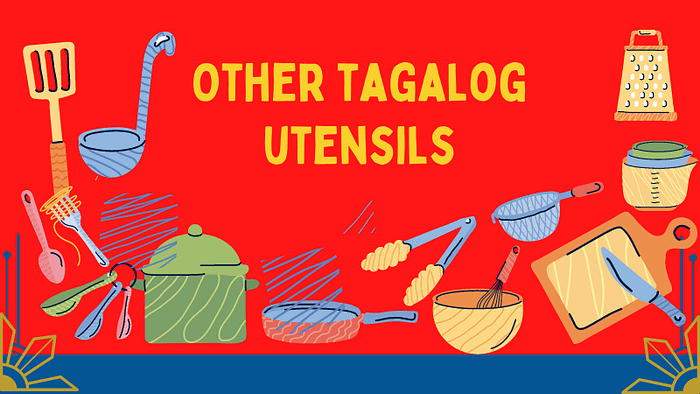
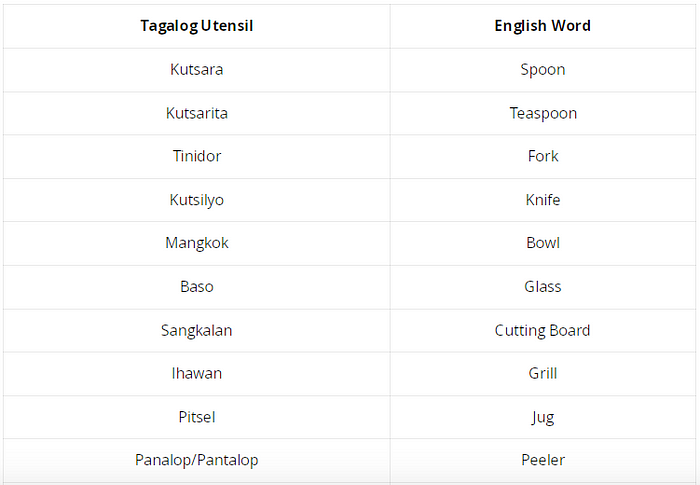
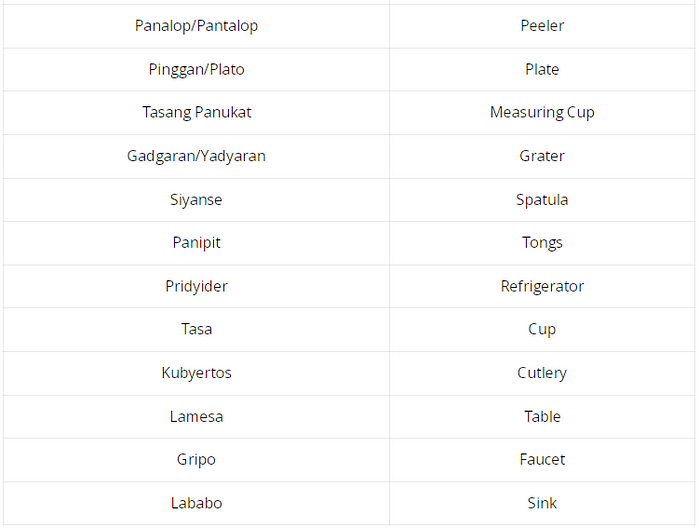
Learn More About Tagalog With Ling App

Are you ready to explore more about your target language?
The Ling App is a user-friendly and easy-to-use language learning application that can teach you to achieve language proficiency and acquisition. You can practice and master your target language interestingly because you can get the knack of it by playing interactive games (enjoyable quizzes and flashcards), exchanging messages through an A.I. chatbot, and reading significant blog posts about your target language. You can also read reviews about other language applications.
Another thing is, you can learn more than one language because it provides 60+ different languages, including popular foreign languages (like Japanese, Korean, Thai, Malay, Vietnamese), unfamiliar foreign languages (Latvian, Albanian, Serbian, Urdu), minority languages, and other dialects.
Hurry! Now is the time to learn a language in a unique and modern way! Download Ling App by Simya Solutions and jump off to a new way of learning!
